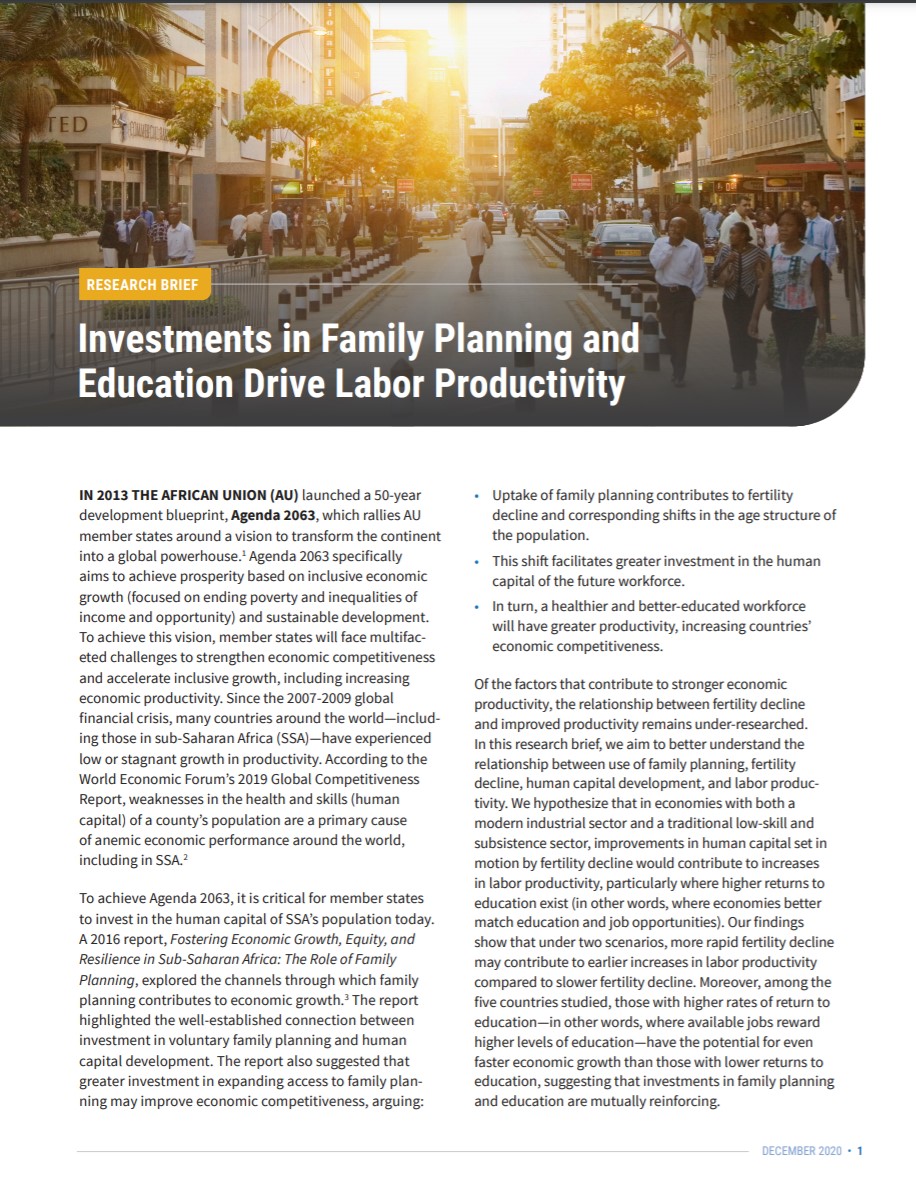
Investments in Family Planning and Education Drive Labor Productivity
In 2013 the African Union (AU) launched a 50-year development blueprint, Agenda 2063, which rallies AU member states around a vision to transform the continent into a global powerhouse. Agenda 2063 specifically aims to achieve prosperity based on inclusive economic growth (focused on ending poverty and inequalities of income and opportunity) and sustainable development. To achieve this vision, member states will face multifaceted challenges to strengthen economic competitiveness and accelerate inclusive growth, including increasing economic productivity. Since the 2007-2009 global financial crisis, many countries around the world—including those in sub-Saharan Africa (SSA)—have experienced low or stagnant growth in productivity. According to the World Economic Forum’s 2019 Global Competitiveness Report, weaknesses in the health and skills (human capital) of a county’s population are a primary cause of anemic economic performance around the world, including in SSA.
Of the factors that contribute to stronger economic productivity, the relationship between fertility decline and improved productivity remains under-researched. In this research brief, we aim to better understand the relationship between use of voluntary family planning, fertility decline, human capital development, and labor productivity. To assess the relationship between family planning, fertility decline, and labor productivity, we applied the Canning-Karra-Wilde (CKW) macrosimulation model in five countries in SSA: Ghana, Kenya, Nigeria, Uganda, and Zambia. We hypothesize that in economies with both a modern industrial sector and a traditional low-skill and subsistence sector, improvements in human capital set in motion by fertility decline would contribute to increases in labor productivity, particularly where higher returns to education exist (in other words, where economies better match education and job opportunities). Our findings show that under two scenarios, more rapid fertility decline may contribute to earlier increases in labor productivity compared to slower fertility decline. Moreover, among the five countries studied, those with higher rates of return to education—in other words, where available jobs reward higher levels of education—have the potential for even faster economic growth than those with lower returns to education, suggesting that investments in family planning and education are mutually reinforcing.
The CKW model elaborates the channels through which fertility decline affects the effective labor supply and economic growth. The CKW model estimates the total output and the size of the labor force under a baseline high fertility scenario compared to a low fertility scenario. Learn more about the methodology and findings in the policy brief, and download the CKW model output for all five countries through the link below.

 ">
">

